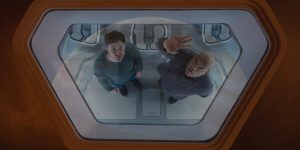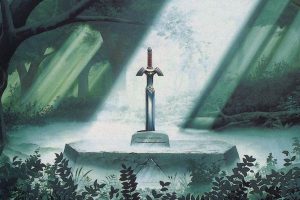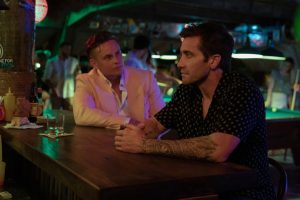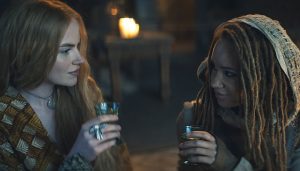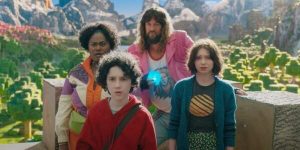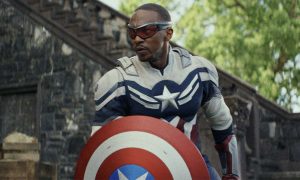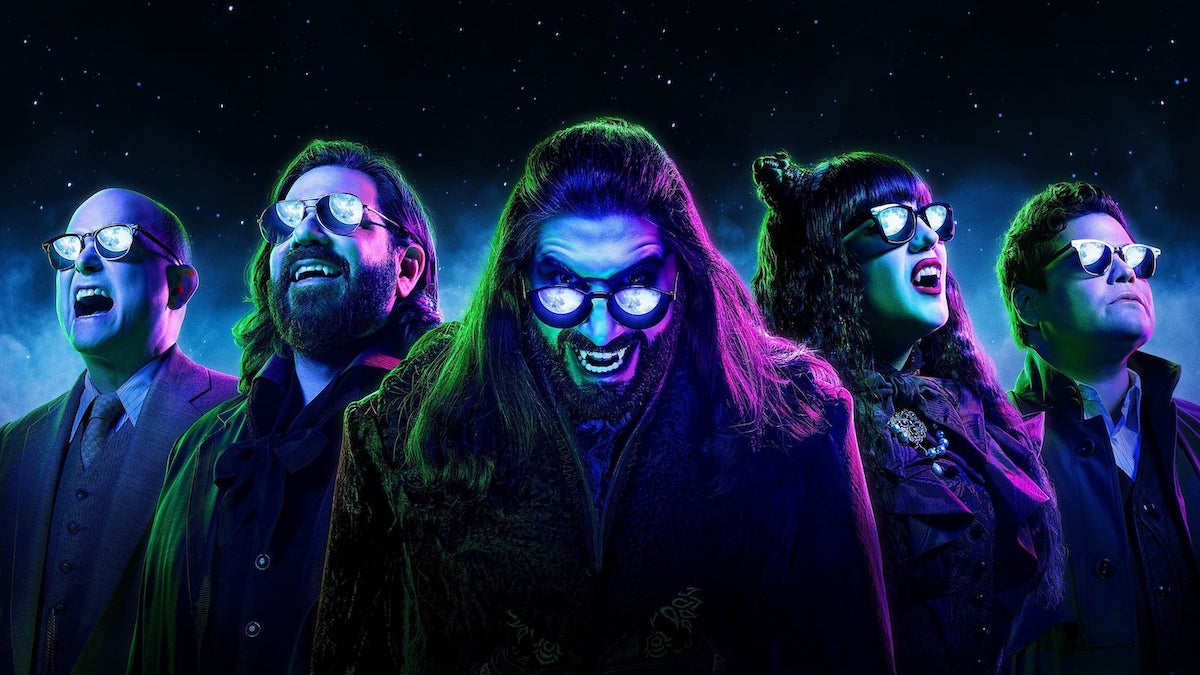
Here’s the thing about ghost stories. They are always better when they’re true. Oh, it’s all very well telling me about the vengeful spirit of a gruesome murder, but if they weren’t murdered 30 years ago today in this very house, then what’s the point?
So while we tend to think of the “found footage” genre as something that materialised in the Black Hills Forest with The Blair Witch Project in 1999, the truth is that as long as there have been spooky stories, the tellers of those stories have used every trick available to convince their audience they are hearing truthful accounting of events.
Bram Stoker’s Dracula is a prime example. One of the archetypal horror stories, but in nearly every chapter the author tells us how the story is being told. Letters, diaries, recordings onto wax cylinders (it’s always worth remembering that by the standards of the time, Dracula’s vampire hunters were extremely high tech), it’s not just the story of Dracula’s reign of terror and ultimate demise, but also the story of how the manuscript itself is assembled.
Selling the Hoax
Famously, Orson Welles would go a step further, broadcasting an adaptation of H.G. Wells’s The War of the Worlds as if it were a real news report, reportedly causing widespread panic. While Welles himself claimed it was never his intention to perpetrate a hoax, and some historians argue that the actual panic caused by the radio play has been significantly exaggerated, that no longer matters. The myth had been created, and any storyteller worth their salt who heard that story felt only one thing – envy.
So it is not surprising that it was only a matter of time before someone tried it again with the advent of the television. When they did, perhaps the most surprising element was that front and centre to the hoax was British talk show host staple, Michael Parkinson.
Long before The Blair Witch Project, Ghostwatch was scaring the pants off audiences with shaky cam footage. Billed as a Halloween live event, audiences watched Michael Parkinson broadcasting from a TV studio while Red Dwarf’s Craig Charles and TV mainstay Sarah Greene were reporting live from “the most haunted house in Britain”.
Plenty has been written about Ghostwatch itself, but perhaps what sold the hoax so effectively was how naff everything was. The jokes were cheesy but unfunny, the presenters were visibly but not unconvincingly strained by the material. For the first hour of the film, the only signs of paranormal activity are reports of knocking, gruesome kids’ drawings, and someone phoning in to say they thought they saw a figure in some dark, blurry camera footage. Everything else is second-hand – some concerned neighbours, children telling tales, the presenter recounting their own unconvincing “paranormal experience” from years before. And because this was the BBC, we also had the obligatory sceptic to come in and scoff at everything.
As its director, Lesley Manning told Den of Geek a few years ago, “I was very aware that so much horror at the time was all extremely tense until you found ‘the thing’ and then it let itself down. You start going ‘Hmm, these special FX are good’ or ‘Ooh, that classic’s not holding up, the blood’s too red’. For me, it always felt too technical. But that wonderful gap – the anticipation and the fear of the unknown – is the gap that I find much more thrilling.”
The next time TV would attempt something quite this audacious was in 2018, with Inside No. 9’s 2018 Halloween special, “Deadline”, a live edition of the show.
Five minutes into the show, the sound cuts out. The BBC announcer interrupts to tell us that due to technical difficulties, the live edition of the show is cancelled, and instead offers viewers a repeat of the season one episode “A Quiet Night In”. But as the repeat progresses, the sound starts to fail. A figure appears in the background who was definitely not in the original episode. The presenter’s next apologies are backed by an eerie whispering… and it goes downhill from there.
Going for a Laugh
But while it was genuinely unnerving, as Inside No. 9 often is, its creators Steve Pemberton and Reece Shearsmith are best known as comedic actors, and there is no denying the genre has been increasingly populated by comedy as time has gone on.
One of the biggest collisions of mockumentary and horror is of course Garth Marenghi’s Darkplace. With no pretence at “real” horror, Darkplace presented itself as a long-lost Channel 4 series, finally presented to the public with interviews and commentary from actors and of course, its star, writer and director, Garth Marenghi himself.
Matthew Holness (the writer whom Garth Marenghi refers to as “the other guy” at live events) has said that he envisaged the series as “Spinal Tap for Horror”. It would go on to inspire a whole generation of film and TV makers.
“Garth Marenghi’s Darkplace is so inspiringly specific with every choice it makes,” says screenwriter, James Hamilton. “The mockumentary format is so over-used in comedy now, and it never feels plausible that it’s a real documentary: they’re just using the conventions to do an otherwise straightforward sitcom.”
Darkplace, on the other hand, is unmistakably the work of Garth Marenghi – not just in its paranormal hospital procedural, but the entire production. While it is a straight-up comedy about a fictional show-within-a-show, what drives it is that same element we talked about at the start – that the story is connecting you to something real.
“It makes the whole series feel real, like part of our world, like something you might discover by chance one night,” Hamilton says. “I think that’s what makes it feel so strong: it uses the documentary format to make it feel even more like a lost artefact.”
Talking (Dismembered) Heads
The face of Garth Marenghi’s co-star, Todd Rivers as Dr Lucien Sanchez, has turned up in more mockumentary horror. That face ultimately belongs to Matt Berry, Lazlo Cravensworth in the US TV series What We Do in the Shadows.
What We Do in the Shadows is something possibly unique, a mockumentary/found footage shared universe, with Jemaine Clement and Taika Waititi’s 2014 movie and its other spin-off, Wellington Paranormal all sharing an interconnected paranormal setting seen entirely through shaky-cam footage and straight-to-camera interviews.
The straight-to-camera interview is perhaps the most vital ingredient to the genre. James Hamilton has pursued the mockumentary format for comedy purposes as well, in his new series Murder for Dummies, and the talking head interview was a key part of its appeal.
“I think what worked for us about this format is it’s very character-forward,” he tells us. “By having the bulk of the series be talking heads, it means you can lean hard into character comedy and give each of them breathing space to present the version of themselves they want to the camera.”
Murder for Dummies presents itself as a documentary about the murder of a much-loved ventriloquist in 1999 (when ventriloquism was as big as the Spice Girls). The story comes off another wave that’s been a boon to the mockumentary horror story: the current widespread love of the True Crime documentary.
“There’s a lot of documentary parody out there, so that wasn’t what we set out to do with Murder for Dummies: instead, we thought ‘What if we can use the true crime doc format to make a proper whodunnit? What if, instead of zeroing in on one very guilty-seeming person, everyone being interviewed clearly had a motive?’” Hamilton says. “That was not only a funny idea to us, but also really excited us for the storytelling opportunities it opened up.”
Of course, as the investigation continues, the filming of this documentary goes off the rails, taking it into whodunnit and ultimately, found footage horror territory.
“I think what got us excited about shooting a documentary-style series was looking at the genres that have overlap with true crime, and working out how to blend them in a satisfying way,” says Hamilton.
Although the format might continue to go deeper into a comedic place, it still has the potential to be genuinely unnerving. That comes from the same quality as the ghost story you hear that took place in this very house. That sense that although you are the audience, you are not safely separated from the tale that is unfolding.
“We’re playing the reality of the situation at all times, the interviewees are constantly (and increasingly) conscious of the camera,” Hamilton points out. “It opens up what you can do with the storytelling between scenes – but also, I think it makes the story feel more immersive. By having our characters constantly aware that they’re being filmed, and by having them react to it, the events we’re seeing feel much more like they could be really happening.”
But is the “Mock” in Mockumentary the operative part? Is it possible to do a horror story in this format without falling into parody? Ultimately, they can be two sides of the same coin.
“Absolutely yes! The thing I found most surprising – and most rewarding – about making Murder for Dummies was working out how to inject genuine horror that builds on, rather than being undercut by, the comedy,” says Hamilton. “In a way, building horror in works the same way that it does for comedy: first, if you’re committing to the premise of what you’re making, and the actors in particular commit to the reality of the world they’re in, then horror becomes quite accessible.”
The post Can Comedy Horror Ever Be Truly Scary? appeared first on Den of Geek.
